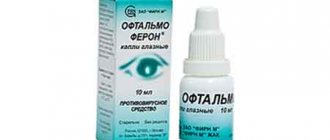Release form, packaging and composition of the drug Clinical-pharmacological group Pharmaco-therapeutic group Pharmacological action Indications for use Method of administration and doses Side effects Contraindications for use Use in children Special instructions Drug interactions
Registration Certificate Holder:
PFIZER ILACLARI, Ltd. Sti. (Türkiye)
ATX Code:
J01DD62
Active substance:
sulbactam
Dosage form:
Sulperazon
| The drug is available with a prescription | Sulperazon | Powder for preparing a solution for intravenous and intramuscular administration reg. No.: P N012160/01 dated 07/08/08 - Indefinitely |
Release form, packaging and composition of the drug Sulperazon
Powder for the preparation of a solution for intravenous and intramuscular administration
white or almost white, with a yellowish tint.
| 1 fl. | |
| cefoperazone sodium | 1.1905, |
| which corresponds to the content of cefoperazone | 1 g |
| sulbactam sodium | 1.1905, |
| which corresponds to the content of sulbactam | 1 g |
Glass bottles (1) - cardboard packs.
Overdose
Excessive amounts of Sulperazone are associated with side effects.
Excessive levels of betalactam antibiotics lead to neurological manifestations: convulsions, numbness of the extremities.
In case of overdose, the most effective method for urgent removal of cefoperazonum, sulbactamum from the body is hemodialysis. The procedure is especially relevant for patients with functional impairment and renal failure.
In case of serious anaphylactic manifestations, immediate administration of adrenaline substances and corticosteroids is necessary. Artificial ventilation is used.
pharmachologic effect
III generation cephalosporin in combination with a β-lactamase inhibitor.
Cefoperazone is a semisynthetic broad-spectrum cephalosporin antibiotic. Acts on sensitive microorganisms during their active reproduction by inhibiting the biosynthesis of cell wall mucopeptide.
Sulbactam does not have clinically significant antibacterial activity (except for Neisseriaceae and Acinetobacter). Studies have shown that it is an irreversible inhibitor of most major beta-lactamases, which are produced by microorganisms resistant to beta-lactam antibiotics.
The ability of sulbactam to prevent the destruction of penicillins and cephalosporins by resistant microorganisms was confirmed in studies using resistant strains, in relation to which sulbactam had pronounced synergism with penicillins and cephalosporins. Sulbactam also binds to some penicillin-binding proteins, so the cefoperazone/sulbactam combination often has a greater effect on susceptible strains than cefoperazone alone.
Sulperazon is active against
all microorganisms sensitive to cefoperazone. In addition, it has synergism against various microorganisms, especially the following: Haemophilus influenzae, Bacteroides spp., Staphylococcus spp., Acinetobacter calcoaceticus, Enterobacter aerogenes, Escherichia coli, Proteus mirabilis, Klebsiella pneumoniae, Morganella morganii, Citrobacter freundii, Enterobacter cloacae, Citrobacter diversus.
Sulperazone is active in vitro
against a wide range of clinically significant microorganisms.
Gram-positive microorganisms:
Staphylococcus aureus (penicillinase and non-penicillinase producing), Staphylococcus epidermidis, Streptococcus pneumoniae, Streptococcus pyogenes (group A beta-hemolytic streptococcus), Streptococcus agalactiae (group B beta-hemolytic streptococcus), most other strains of beta-hemolytic streptococci, many strains of Streptococcus faec alis (enterococci).
Gram-negative microorganisms:
Escherichia coli, Klebsiella spp., Enterobacter spp., Citrobacter spp., Haemophilus influenzae, Proteus mirabilis, Proteus vulgaris, Morganella morganii, Providencia spp. (including Providencia rettgeri), Serratia spp. (including Serratia marcescens), Salmonella spp., Shigella spp., Pseudomonas aeruginosa and some other Pseudomonas spp., Acinetobacter calcoaceticus, Neisseria gonorrhoeae, Neisseria meningitidis, Bordetella pertussis, Yersinia enterocolitica.
Anaerobic microorganisms:
gram-negative rods (including Bacteroides fragilis, other Bacteroides spp. and Fusobacterium spp.), gram-positive and gram-negative cocci (including Peptococcus spp., Peptostreptococcus spp., Veillonella spp.), gram-positive rods (including Clostridium spp., Eubacterium spp. and Lactobacillus spp. ).
The following sensitivity levels have been established for sulbactam/cefoperazone. MIC (µg/ml), expressed in the concentration of cefoperazone for sensitive microorganisms is less than or equal to 16, for organisms with intermediate sensitivity is in the range of 17-63, and for resistant ones - more than 64. Sensitivity zones when determined by the disc diffusion method are: for sensitive microorganisms more than 21 mm; with intermediate sensitivity - from 16 to 20 mm, and for resistant - more than 15 mm.
To determine the MIC, you can use the method of serial dilutions of sulbactam/cefoperazone in a 1:1 ratio in broth or agar media. To determine MIC by the disk diffusion method, it is recommended to use a disk containing 30 μg of sulbactam and 75 μg of cefoperazone.
The following quality control standards are recommended when using discs containing 30 mcg sulbactam and 75 mcg cefoperazone. For the control strain Acinetobacter spp. (ATCC 43498) zone diameter is 26-32; for Pseudomonas aeruginosa (ATCC 27853) - 22-28; for Escherichia coli (ATCC 25922) - 27-33; for Staphylococcus aureus (ATCC 25923) - 23-30.
When is it shown?
Consisting of sulbactam and cefoperazone, Sulperazone is a medication that is effective against all forms of microflora for which cefoperazone is dangerous. The medicinal composition is approximately four times more effective than a drug program that involves using its components separately. Synergism is observed in the case of infection with a wide range of microbes, and is especially pronounced during the invasion of Haemophilus influenzae, Bacteroides, Enterobacteriaceae, Eicheria, Proteus, Klebsiella, Morganella, and some staphylococci.
In the instructions for use of Sulperazone, the manufacturer indicates that the substance is effective against the invasion of gram-positive pathological life forms. The drug can be prescribed if a person has more pathologies associated with staphylococci that are capable of generating penicillinase, as well as those that do not have this quality. The drug can be prescribed for infection with beto-hemolytic streptococci and enterococci. Studies have shown the effectiveness of the drug against a wide range of gram-negative bacteria. The medication is prescribed for infection with anaerobic gram-negative bacilli, cocci of various types, and gram-positive bacilli. The effectiveness of Sulperazon injections has been proven in case of invasion of clostridia and lactobacilli.
Indications for use
Infectious and inflammatory diseases caused by microorganisms sensitive to the drug:
- infections of the upper and lower respiratory tract;
- infections of the upper and lower urinary tract;
- intra-abdominal infections (including peritonitis, cholecystitis, cholangitis);
- sepsis;
- meningitis;
- skin and soft tissue infections;
- bone and joint infections;
- inflammatory diseases of the pelvic organs (including endometritis);
- gonorrhea.
Directions for use and doses
In adults
Sulperazon is recommended for use in the following daily doses.
| Sulbactam/cefoperazone ratio | Sulperazon (g) | Sulbactam (g) | Cefoperazone (g) |
| 1:1 | 2-4 | 1-2 | 1-2 |
The daily dose should be divided into equal parts and administered every 12 hours.
For severe or refractory infections
the daily dose of Sulperazone can be increased to 8 g with a component ratio of 1:1 (i.e. 4 g of cefoperazone). Patients receiving Sulperazone in a 1:1 ratio may require additional administration of cefoperazone. The dose should be divided into equal parts and administered every 12 hours.
The recommended maximum daily dose of sulbactam is 4 g.
In children
Sulperazon is recommended for use in the following daily doses.
| Sulbactam/cefoperazone ratio | Sulperazon (mg/kg/day) | Sulbactam (mg/kg/day) | Cefoperazone (mg/kg/day) |
| 1:1 | 40-80 | 20-40 | 20-40 |
The dose should be divided into equal parts and administered every 6-12 hours.
For serious or treatment-refractory infections
doses can be increased to 160 mg/kg/day with a 1:1 component ratio. The daily dose is divided into 2-4 equal parts.
In newborns
during the first week of life, the drug should be administered every 12 hours. The maximum daily dose of sulbactam in children should not exceed 80 mg/kg/day.
In patients with severe renal impairment
(
CC 15-30 ml/min),
the maximum dose of sulbactam is 1 g every 12 hours (maximum daily dose of sulbactam - 2 g), and in patients with
CC less than 15 ml/min,
the maximum dose of sulbactam is 500 mg every 12 hours (maximum daily dose dose of sulbactam - 1 g). For severe infections, additional administration of cefoperazone may be required. Since during hemodialysis the pharmacokinetics of sulbactam changes significantly and the serum T1/2 of cefoperazone is slightly reduced, administration of sulperazone should be planned after dialysis.
If regular monitoring of serum concentrations of cefoperazone is not carried out, then the minimum daily dose should not exceed 2 g.
Rules for the preparation and use of a solution for intravenous administration
To prepare a solution for infusion, dilute 2 g (1 g + 1 g) of Sulperazone in an initial volume of 6.7 ml of one of the following infusion solutions: 5% dextrose solution in water, 5% dextrose solution in 0.225% sodium chloride solution, 5% dextrose solution in saline solution, 0.9% sodium chloride solution or sterile water for injection, and then diluted to 20 ml with the initial solution.
Lactated Ringer's solution can be used to prepare a solution for intravenous infusion, but it cannot be used for initial dissolution, given the incompatibility of this mixture. Compatibility can be achieved by two-step preparation of the solution - the powder is initially dissolved in water for injection, and then diluted with Ringer's lactate solution to a sulbactam concentration of 5 mg/ml (2 ml of the initial solution is diluted in 50 ml of Ringer's lactate solution or 4 ml in 100 ml of Ringer's lactate solution ).
The infusion is carried out over 15-60 minutes.
For IV injection, the contents of each vial should be dissolved in 6.7 ml in one of the solvents as indicated above and administered over a minimum of 3 minutes.
Rules for preparing a solution for intramuscular administration
To prepare a solution for intramuscular administration, a 2% solution of lidocaine can be used, but it cannot be used for initial dissolution, given their incompatibility. Compatibility can be achieved by two-step preparation of the solution - initially the powder is dissolved in water for injection and then diluted with a 2% solution of lidocaine hydrochloride.
The total volume of solvent is 6.7 ml. The final solution will contain cefoperazone/sulbactam in a ratio of 125 mg/125 mg in 1 ml of 0.5% lidocaine solution.
| Total dose (g) | Equivalent doses of sulbactam + cefoperazone (g) | Solvent volume (ml) | Maximum final concentration (mg/ml) |
| 2 | 1+1 | 6.7 | 125+125 |
Medicinal properties
The principle of action of the drug is based on a combination of active components. The product is four times more effective than non-combined substances. In the process of microbial inhibition, one element complements and protects the properties of the other. The chemical formula includes sodium sulfone, molecular weight - 255 units. The substance dissolves well in water. Sodium sulbactam is a penicillin derivative that inhibits or inhibits the growth of beta-lactam chains.
Cefoperazone is a partially synthetic antibiotic of the tsifalosporin group, it belongs to the 3rd generation drugs, for parenteral use only. Molecular weight – 667 units. It acts against microorganisms in the division stage by blocking the synthesis of peptides, thereby destroying the membrane shells of the nucleus.
The following strains are sensitive to the drug:
Gram-positive
- Staphylococci, including those producing penicillinase
- Streptococcus pneumoniae
- Agalaktia
- Streptococci
- Enterococci
- Staphylococcus epidermidis.
Gram-negative
- Escherichia coli
- Klibsiella
- Enterobacter
- Haemophilus influenzae
- Protea mirabilis and vulgaris
- Citrobacter
- Morganella
- Providence
- Serrations
- Salmonella
- Shigella
- Pseudomonas
- Acinetobacter
- Gonococci
- Bordetella
- Yersinia
- Meningococci.
Anaerobes
- Fragilis
- Fusobacteria
- Peptococcus
- Veillonella
- Clostridia
- Lactobacilli.
After parenteral administration, the period of partial elimination of sulbactam takes 60 minutes, cefoperazone - 2 hours. The first substance is concentrated in parameters of no more than 16 units for susceptible microorganisms, from 20 to 60 for less sensitive microorganisms, and above 60 for resistant microorganisms. When determined by the diffusion method, the intervals are 21, 18 and 15 mm, respectively.
The highest doses of cefoperazonum after drip administration of 2 mg are observed in the amount of 120 mcg/ml, cefoperazonum - 230 units.
Both substances are well distributed in all systems, mucous membranes and liquids. With repeated use, no changes in pharmacological properties occur. When the drug was administered every 10 hours, no increased levels were observed.
Most of it is excreted through the kidneys - in the proportion of 65% sulbactamum
and 25% cefoperazone. The remaining lobe is removed through the bile ducts. In patients with liver diseases, the exit period increases slightly, even with serious pathologies - only 2-3 times.
With significant renal failure, there is a relationship between clearance and creatine kinase activity. In this case, elimination takes about 7-10 hours. Also, deviations in duration have been identified in elderly people. In children, no significant changes in these parameters were observed.
Side effect
Allergic reactions:
anaphylactic shock.
From the digestive system:
diarrhea, nausea, vomiting, pseudomembranous colitis; transient increase in liver function indicators - AST, ALT, alkaline phosphatase, bilirubin in the blood serum.
Allergic reactions:
maculopapular rash, itching, urticaria, Stevens-Johnson syndrome (the risk of developing these reactions is higher in patients with a history of allergic reactions).
From the hematopoietic system:
decreased number of neutrophils, reversible neutropenia (with long-term treatment), decreased hemoglobin and hematocrit levels, transient eosinophilia, leukopenia, thrombocytopenia, hypoprothrombinemia; in some cases - a positive Coombs test. When using Benedict's or Fehling's solution, a false-positive reaction to glucose in the urine may occur.
From the urinary system:
hematuria.
Local reactions:
Sulperazon is well tolerated when administered intramuscularly. Sometimes after an intramuscular injection there is transient pain and a burning sensation at the injection site. When administering Sulperazone intravenously via a catheter, phlebitis may develop at the infusion site.
Other:
headache, fever, chills, vasculitis.
Many or few?
There is a risk of overdose when patients use both some analogues in tablets and Sulperazone. Information about overdose regarding the medication in question is quite scarce. It is known that excessive use increases the likelihood of side effects. Increased concentrations in the spinal cord fluid can cause neurological damage and increase the risk of seizures.
If an overdose occurs, symptomatic treatment is indicated. The medication can be removed by blood dialysis. Presumably, in case of impaired renal or hepatic functionality, this is the best method to remove the drug from the body.
Use in children
In children
Sulperazon is recommended for use in the following daily doses.
| Sulbactam/cefoperazone ratio | Sulperazon (mg/kg/day) | Sulbactam (mg/kg/day) | Cefoperazone (mg/kg/day) |
| 1:1 | 40-80 | 20-40 | 20–40 |
The dose should be divided into equal parts and administered every 6-12 hours. For serious or treatment-refractory infections,
the dose can be increased to 160 mg/kg/day with a 1:1 component ratio.
The daily dose is divided into 2-4 equal parts. In newborns
, during the first week of life, the drug should be administered every 12 hours. The maximum daily dose of sulbactam in children should not exceed 80 mg/kg/day.
Special occasion
In the instructions for Sulperazone, the manufacturer indicates that cefoperazone is predominantly eliminated by bile. If obstruction of the bile ducts is established, if there are liver diseases, on average the half-life of this component increases three times, sometimes four times. In mild forms of the violation, the term is doubled relative to the standard. In addition, if there are problems with the health of these organs, the percentage of the substance excreted by the kidneys increases.
In the instructions you can see the results of studies conducted when using Sulperazone for renal failure. A strong dependence on the clearance of sulbactam and creatine has been established. In the terminal form of renal failure, the half-life of sulbactam is significantly prolonged - some studies show a duration of almost ten hours. A significant change in the half-life is possible due to blood dialysis. At the same time, the procedure affects the ability of the substance to be distributed throughout the body. Regarding cefoperazone for kidney problems, no significant kinetic changes were found.
special instructions
In patients receiving beta-lactam antibiotics, incl. cephalosporins, cases of serious hypersensitivity reactions (anaphylactic), which sometimes led to death, have been described. The risk of developing such reactions is higher in patients who have a history of hypersensitivity reactions. If an allergic reaction occurs, it is necessary to discontinue the drug and prescribe adequate therapy. In case of serious anaphylactic reactions, immediate administration of epinephrine (adrenaline) is necessary. GCS is administered intravenously and ensures airway patency, including intubation. In case of severe obstruction of the biliary tract, severe liver diseases, as well as impaired renal function combined with any of these conditions, adjustment of the drug dosage regimen may be required. In patients with impaired liver function and concomitant renal impairment, it is necessary to monitor the serum concentration of cefoperazone and adjust its dose if necessary. If regular monitoring of the serum concentration of cefoperazone is not carried out in such cases, then its daily dose should not exceed 2 g. When treated with cefoperazone, as with other antibiotics, in rare cases, vitamin K deficiency developed. The reason for this is probably the suppression of normal intestinal microflora, which synthesizes this vitamin. Risk groups include patients receiving poor nutrition, patients with malabsorption (for example, cystic fibrosis) and those on IV artificial nutrition for a long time. In such cases, as well as in patients receiving anticoagulants, it is necessary to monitor the prothrombin time and, if indicated, prescribe vitamin K. With long-term treatment with Sulperazone (as with other antibiotics), excessive growth of insensitive microorganisms may be observed. Patients must be carefully monitored during treatment. During long-term therapy with Sulperazone, it is recommended to periodically monitor indicators of the function of internal organs, including the kidneys, liver and hematopoietic system. This is especially important for newborns, especially premature babies, and young children.
Basic information
As he explains, it is effective against microorganisms, since it inhibits the reproduction process. The drug can be prescribed only if the pathological microflora is sensitive to the active compounds of the drug. Under the influence of active substances, the biological reaction of generating mucopeptide, necessary for the construction of the microbial cell wall, is inhibited.
Studies have shown that sulbactam does not have a pronounced antibacterial effect. An exceptional case is infection with Neisseria and Acinobacter. This substance is included in the drug due to its ability to irreversibly inhibit beta-lactamase. The effectiveness is observed relative to the vast majority of these compounds produced by microscopic life forms. Due to the ability to produce this compound, bacteria are not dangerous to certain antibiotics, while sulbactam helps to minimize this resistance. Sulbactam may react with proteins that can bind penicillin. Thanks to this, the combination of sulbactam with cefoperazone gives a more pronounced effect compared to the independent use of cefoperazone alone.
Drug interactions
Disulfiram-like effects characterized by flushing, sweating, headache and tachycardia have been reported when drinking alcohol during treatment with cefoperazone and for up to 5 days after its administration. Similar reactions have been observed with the use of some other cephalosporins, so patients should be warned about the possibility of their occurrence when consuming alcoholic beverages during treatment with Sulperazone. In patients who require artificial nutrition (orally or parenterally), the use of solutions containing ethanol should be avoided. Pharmaceutical interactions
Solutions of Sulperazone and aminoglycosides should not be directly mixed, given the pharmaceutical incompatibility between them. If combination therapy with Sulperazone and aminoglycosides is carried out, the two drugs are administered by sequential infusions using separate secondary catheters, and the primary catheter is sufficiently flushed with the solution between doses of the drugs. The intervals between the administration of Sulperazone and aminoglycoside during the day should be as long as possible.
Is it possible or not?
According to the instructions for Sulperazone, during therapy with this drug you should not use medications to which increased susceptibility has been established. The product is prohibited in case of an allergic reaction not only to its components, but also to any beta-lactam compounds, cephalosporins, penicillins. If you use Sulperazon in the form of a solution, the components of which include lidocaine, a blockade inside the heart becomes a contraindication. Injection use is allowed only if the patient has been given a pacemaker. It is prohibited to use the described drug in case of severe heart failure.
During pregnancy and breastfeeding, according to the instructions for use of Sulperazone (analogues, however, are mainly used with the same limitation), the medication is administered only when the obvious benefit significantly outweighs the danger to the fetus. The doctor is obliged to familiarize the woman with all the dangers and risks associated with the use of the composition.






